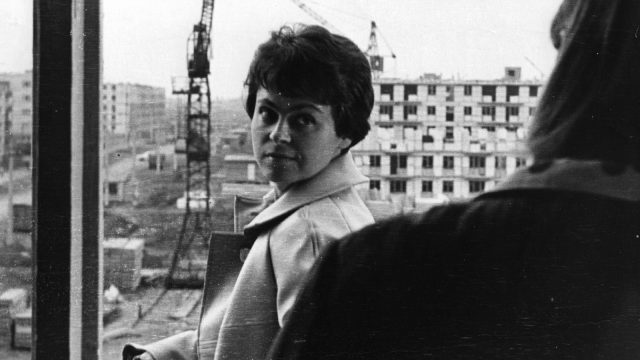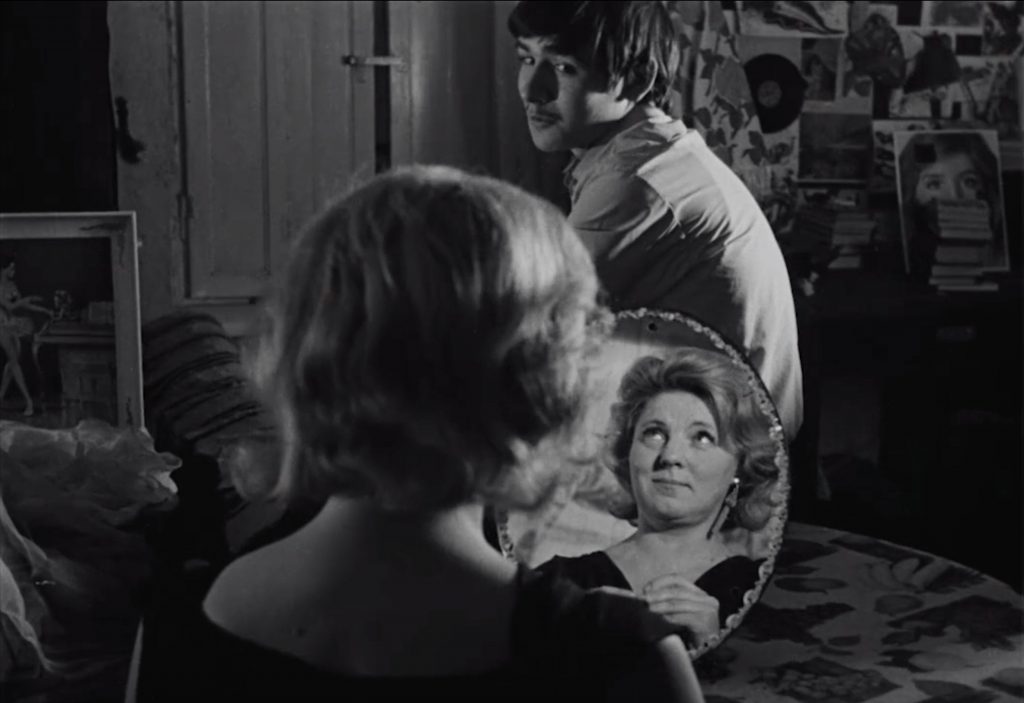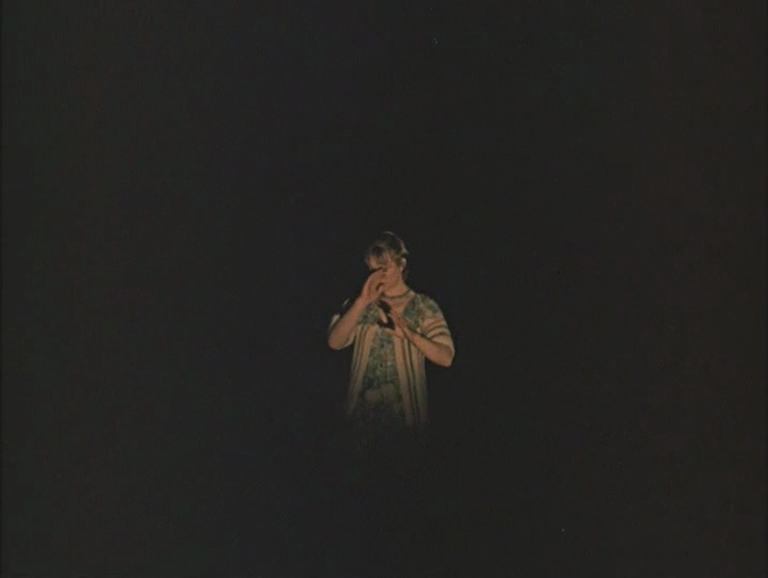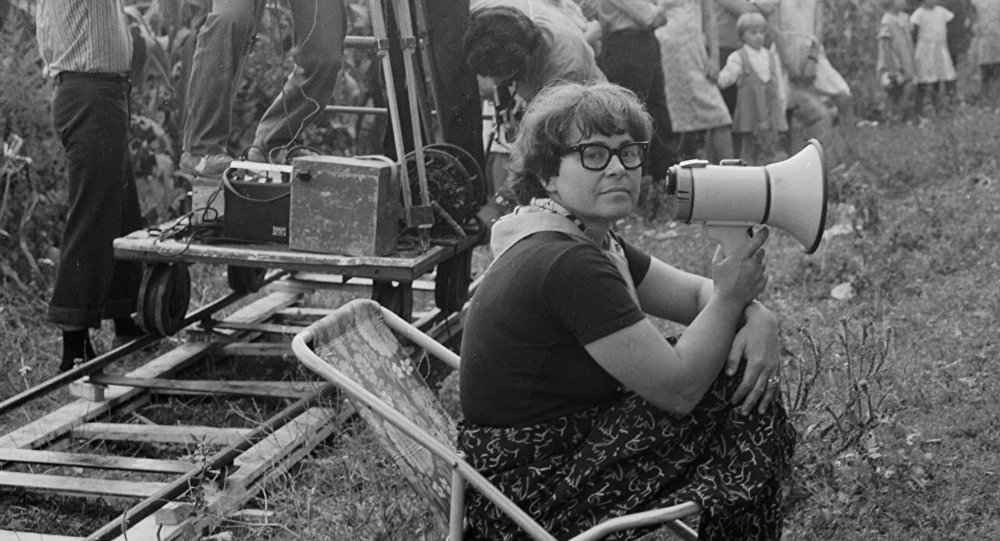Three years after Kira Muratova’s passing, her films remain as enigmatic — and criminally underseen — as ever. The director was always an outlier whose fascination with outsiders and the undercurrents of modern life persisted throughout her thorny career. Over five decades, she directed 15 solo features, all of which, despite their visual and thematic variety, bear the unmistakable mark of a tenacious and perceptive artist who was constantly reinventing herself without sacrificing her integrity.
Kira Muratova (née Korotkova) was born in Moldova to a Russian father and a Romanian mother. Growing up, she struggled to fit in: she identified as Russian at a Russian school and as a Romanian at a Romanian school; as a filmmaker, she would be considered either Russian or Ukrainian depending on where she was working. She realized that she wanted to be a director quite early, deriving so much joy from directing her co-stars at a school play that she knew she had to go into the arts.
After moving to Moscow, she went to film school and studied under Sergei Gerasimov. On her first shorts and feature debut, Our Honest Bread, she shared the directorial duties with her then-husband, fellow film school graduate Oleksandr Muratov. These early efforts, while fairly accomplished, were clearly beholden to the tenets of contemporary Soviet filmmaking, which favored clear-cut narratives with a propagandist slant.
Muratova had something different in mind: after her divorce, she embarked on a solo career, and her first directorial feature let go of bureaucratic conventions and politics, weaving an intricate web of emotions and subjective perceptions. Brief Encounters is a story of two women who fall in love with the same man — a trite set-up that blossoms into a delicate character study. Using a fractured timeline, Muratova lets us peek at the two women at different points in their lives, structuring the story around an absence. The man, played by singer-songwriter Vladimir Vysotsky, remains a distant memory, while the women, played by Muratova and Nina Ruslanova, emerge as full-fledged and complex human beings. By peppering the film with flashbacks, seemingly inconsequential vignettes centered on minor characters, and close-ups of objects that make up the women’s surroundings, Muratova creates an entire universe that feels complete and lived-in.
Although the film may seem conventional by modern standards, Muratova’s approach was a breath of fresh air in the Soviet film culture of the 1960s. She went further in her sophomore feature, The Long Farewell, experimenting with camera and sound to convey the fleeting impressions and changing moods of another pair of characters. Mirroring Brief Encounters in both title and set-up, The Long Farewell tells the story of a woman and her college-age son, both of whom miss their estranged (and unseen) husband and father. Light and breezy in its first half, the film goes darker in the second when the mother’s anxiety overcomes her and the son yearns to leave his hometown and start a life of his own. Gloomy yet drily funny, the film offers a sensitive look at a familiar situation, and its audiovisual style is all about reflections, echoes, and pregnant pauses: the camera sneaks around and capriciously turns away as the sound wobbles or drops entirely when the characters get lost in their thoughts.
Introspective and unconcerned with social issues, Brief Encounters received a theatrical release despite displeasing censors; The Long Farewell, which was even less political and conventional, did far worse: it was condemned as “bourgeois” and “formalist” and banned by the Communist Party of Ukraine with no prospect of eventual release. Prohibited from directing, Muratova had to work as a librarian. Seven years later, she was finally given a chance to make another feature at a different studio. Alas, the officials at Lenfilm proved just as uncooperative, questioning many of the director’s choices down to the shade of the heroine’s lipstick (too bright for an honest Soviet woman).
The resulting film, Getting to Know the Big Wide World, was cut down to 75 minutes, and yet even in this truncated form it dazzles with its bold creative choices: Muratova finds beauty in squalor and creates a disarmingly tender love story in a breathlessly edited succession of scenes that feels like flipping through a photo album. Once again, mirrors and reflections are crucial to the images’ structure: by multiplying, dropping out of view and receding into shadows, the characters gradually lose their corporeality and shake off their ties to their dull, bureaucratic, artificial reality. The world becomes whole only after it shatters and has to reassemble from a kaleidoscope of refractions, flashes, murmurs, and repetitions (embodied here by twins and visual rhymes — crucial elements in Muratova’s vocabulary). For her first film in color, the director trades the stark and angular black-and-white of The Long Farewell for the dusty palette of a provincial town and turns the dun and dirty environment of a construction site into a place of power and rebirth, sun-dappled and punctured with splashes of red. This early masterpiece anticipates the carnivalesque aesthetic that will become Muratova’s calling card.
As Muratova’s directorial style moved further away from the accepted norm into the realm of avant-garde experimentation, her relationship with the higher-ups became even more antagonistic. The lack of political themes in her work rankled as well: whenever her characters spouted slogans, the emptiness and pomposity of propaganda became blatant and risible. As a remedy to this problem, the Ukrainian State Film Agency decided to let Muratova tackle something from classical literature to prevent her from “distorting Soviet reality.” After shutting down her adaptation of Mikhail Lermontov’s Princess Mary in pre-production, the Odessa Film Studio greenlit Among Grey Stones, an adaptation of a 19th-century novella by Vladimir Korolenko.
The novella centers on a boy from a wealthy family who is left to roam free in his provincial town after a family tragedy. The boy makes friends with two children who live in the ruins of a church and thus enters a world completely different from his own. Muratova takes this opportunity to explore the town’s underworld, filling the screen with odd characters — beggars, crooks, madmen, and self-professed messiahs. The children come face to face with disease, madness, and death; the film is steeped in decay and despair. Needless to say, the studio was dissatisfied: the movie was severely cut down to remove the most bizarre and unpleasant characters and make the “unnecessarily long” takes shorter. Muratova tried to reason with the management, threatening to take her name off the film. This negotiation tactic backfired: her name was removed, and much of the material ended up on the cutting-room floor. And yet even in this mangled condition, the film is a striking exploration of child psychology and transitional states — dreams and consciousness, sanity and madness, health and disease, youth and adulthood, life and death — themes Muratova would continue to plumb up to the end of her career.
It wasn’t until Perestroika that Muratova was finally allowed to screen her banned films and enjoy belated recognition. From 1986 onward, she worked steadily, directing 11 features, receiving awards at film festivals, and mentoring fellow filmmakers. Her films never found much commercial success — they were far too unusual and transgressive for that — but she reveled in her creative freedom, busting taboos and shedding light on the dregs of society. Repurposing clichés and eschewing traditional narrative structures, she built her films like socio-psychological experiments, adding layers and variations as she went along. Her stories — always taking left turns and confounding expectations — focused on the disenfranchised and the dispossessed, to the point that one of her later-stage features was titled Second-Class Citizens. As she was no longer obligated to follow the rules, she populated her films with odd figures (often played by non-professional actors who were colorful characters themselves) that had fallen through the cracks before.
Her magnum opus, The Asthenic Syndrome, a key text of the pre-collapse Soviet Union, depicts a nation that is exhausted, hungry for human connection, and indifferent to challenging art. The film starts as a sepia-toned story of a grieving widow who alienates everyone with her erratic behavior. Eventually, the story is revealed to be a film within a film, and the audience is having none of it. Pronouncing the film (and Muratova’s entire filmography by association) too depressing, the viewers pour out of the theater, and then our expectations are subverted yet again: the focus of the narrative shifts to a meek schoolteacher who frequently falls into catatonia due to his inability to handle stress. Through his passivity, the protagonist cedes the stage to other strange characters and situations that vie for our attention. Using the voices and bodies of these people as pieces in a huge mosaic, Muratova creates a freewheeling, absurdist, and funny epic.
Off-putting and mesmerizing in equal measure, The Asthenic Syndrome was released to critical acclaim and won a Silver Lion at the Berlin Film Festival. The public was divided: some called the film a freak show; others considered it a slight exaggeration of reality. As for Muratova, condemnation never bothered her: she continued her experiments, stripping movies down to essentials and rebuilding film grammar from the ground up. She made black comedies and tragedies tinged with dramatic irony, centering her stories on homeless intellectuals, childlike policemen, murderous children, tutu-wearing circus performers, rich perverts, and other types that would be deemed too uncouth for commercial cinema.
Her fascination with transgression was not a pose or a cheap shock tactic but a way to explore the boundaries of acceptability in art and life. The results are both fantastical and hyperreal — director Marina Razbezhkina has rightfully called Muratova “the greatest documentarian of our time.” These unsettling portraits of contemporary life take mundane situations as springboards for Kafkaesque explorations of societal structures. Words and phrases are repeated ad nauseam until they lose all meaning, rendering language useless. Laws and ethical norms prove just as fragile as the human psyche. Life appears both hilarious and horrifying.
Muratova herself was well aware of the contradictions in her work, which she saw as a reflection of contradictions in life and her chosen profession. As a woman in a predominantly male field, she stood her ground and forged her own path without succumbing to the demands of the market or the powers that be. Spiky and exacting, she encouraged collaboration and community, establishing many professional relationships that lasted for decades. Confronted with life’s cruelties, she viewed cinema as a means of escape that lets people process their fears and desires without pulling any punches. Defying analysis, she went deeper and deeper until she put cinema itself to the test in her final film, Eternal Homecoming. Half metafictional lark, half philosophical treatise, it’s Kira Muratova in a nutshell: complex and deeply strange but also rewarding and beautiful if considered from the right angle. Few filmmakers were as confident in the viewer’s intelligence or their own abilities, bouncing the former’s preconceptions and biases back off the screen.
Kira Muratova’s cinema is a cinema of paradoxes. Her style is utterly unique and instantly recognizable. She looks for beauty in ugliness and reveals rot in decorative things, and her sensibility is both distinctly feminine and uncommonly abrasive. Her quirkiness is consistent yet constantly surprising. Themes and ideas reoccur in her work with startling regularity, but her films are not repetitive. Each of her movies stands apart while representing a logical step in her artistic evolution. Her films are bleak yet funny and bursting with life. Her mentality could be misconstrued as nihilist, but the unpleasant surface hides a bottomless well of humanity. Scorned and admired, she remains in a league of her own.




